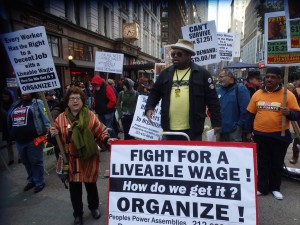Life just happens, good or bad, for many families out there in the United States. There’s no denying it. Single mothers, even single fathers: low-income families have a burden on their shoulders where basic bookkeeping becomes a stress of mammoth proportions due to the fact that there’s never enough income generated to pay necessary bills just to make it day by day.
So what has to be in place? Simply put, government aid. It’s almost a necessity for low-income families. But whether you think it’s a crutch or not, and whether many simply seem to take advantage of the benefits offered by the government, one thing is clear — even the families that do work hard seem to only make it by the skin of their teeth, having to pull from their next paychecks to pay back someone who lent money, or robbing “Peter” to pay numerous “Pauls,” because the fact is this — government aid can only do so much in comparison to personal finances (and, yet, there’s so much going into those funds that it may shock you).
Here Are Five Facts That Just Might Blow You Away With Respect to Government Aid and Low-Income Families
- Minimum Wage Jobs Don’t Often Guarantee Raises or Even Consistent Workweeks — Take it from many particular employees, most of them part-time, for certain fast-food chains. When the paychecks aren’t the same every other week, that makes budgeting all the more difficult for low-income families. Find out what those figures are right here.
- Food Stamps, While Extensive, Can Fluctuate and Also Promote Bad Health — Think about it for a moment. There’s a lot of money already going into the fund, but the big problem is just what you can exactly buy with your food stamps. This is typically how it would work for a single mother with a low wage of $7.50/hour.
- Yes, Low-Income Families Do Put Their Share Into Child Care Benefits — As much as they can possibly put into it, at least…. Given the kind of income they’re literally forced to bring in. Want to know just what they could be responsible for each week?
- Additionally, Low-Income Families Do Put Their Share Into Rent and Housing Costs — Granted, there are no handouts. But the numbers might actually shock you when you put it into perspective like this.
- Medicaid Will Only Provide for “so Much” to the Point That You’ll Just Want to Get By — It’s basic health insurance. But it’ll only cover certain procedures, prescriptions and other costs, plus there’s still some out-of-pocket concerns at such a low minimum wage that make Medicaid a bit laughable (not due to the government’s lack of assistance, though, and you’ll see why right here).
What Do These Facts Mean to You? That They Prove Benefits Don’t Benefit?
On the contrary…. They certainly make their mark. If it wasn’t for these programs, you’d have single parents on minimum wage or low-income families stuck in homeless shelters without any way to make the rent payment. That’s just a matter of fact….
But when you’ve got a certain fast-food chain making anywhere around $4.8BB in annual profits, it begs the question about employment — why not pay your workers what they earn with all the hours they put in, or want to put in, so they can get off of government aid and not have to pick and choose on their expenses?
Your average low-income worker will have just over $6K in annual income and about $11K in benefits for food, rent and child care. How’s that for a perspective on low-income families?
ITPN recognizes there’s a problem with the current system we have in place. So let’s fix it. Now.
Share
Follow Us!


